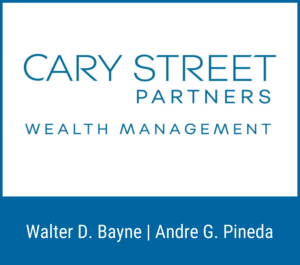Back in 2018, when Brian McDermott and his wife, Lori, moved into their new (old) home on Princess Anne Street in Fredericksburg, they were eager to restore the 268-year-old property, also known as the Charles Dick House.
“It was going to need a lot of work, but we love downtown and its history, and we’re ready to be the stewards,” Brian McDermott told The Free Lance-Star at the time. ”We wanted to restore it to what it should be, so it stands for another 200 years.”
A few years later, however, the McDermotts applied for and received a certificate of appropriateness from the city’s Architectural Review Board (ARB) to demolish a small, 1910s-era building nestled in the back corner of their lot at 204 Lewis St.
Today, that structure is still standing, and the question of legal standing will go before the Virginia Supreme Court later this year as the final stop in a lawsuit filed by the Historic Fredericksburg Foundation, Inc. (HFFI) against the Fredericksburg City Council.
The suit revolves around whether HFFI has standing or a legal right to pursue a legislative appeal of the ARB’s decision. In legal filings, HFFI argued that its proximity to the structure (the nonprofit is headquartered 46 feet away in the Lewis Store) means that “it has a direct, substantial, immediate and pecuniary [monetary] interest in the preservation of the subject structure.”
“I guess the main gist of it is, if Historic Fredericksburg Foundation doesn’t have standing in something like this, then actually no one in Fredericksburg has standing, in effect,” HFFI President David James told the Free Press.
‘A danger to life and safety’
According to court documents, the city hired a series of engineers to assess the structure’s condition prior to the ARB issuing its ruling.
They included Russell S. Harris Jr. of Dominion Engineering Associates, Inc., who offered his “professional engineering opinion that the structure is a danger to life and safety if there were a wall failure and therefore [is] unsafe for occupancy.”
Another engineer, Raymond P. Freeland of Freeland Engineering, concluded that “the degree of danger in salvaging the building, is, by far, outweighed by the cost of repairs and is too dangerous to attempt repair.” Engineers also voiced concerns over the condition of an adjacent retaining wall, with one stating that it was “in a state of progressive failure.”
On May 22, 2022, engineer David B. Bronston of Rock River Engineering visited the site with City Historic Resources Planner Kate Schwartz, Senior Building Inspector Ron Cropp and architect Charles Aquino. While Bronston noted a “failing foundation,” he also outlined six steps for repairing the structure. They included stabilizing the retaining wall and installing underpinning to the building foundation.

A photo of the retaining wall abutting the structure at 204 Lewis St. (Photo courtesy of HFFI)
The ARB had these findings on June 13, 2022, when it voted unanimously to award the McDermotts the certificate of appropriateness for demolition, a required step for properties located within Fredericksburg’s Historic District.
HFFI promptly appealed to the Fredericksburg City Council and began corresponding with then-City Attorney Kathleen Dooley.
Six days prior to the appeal, Dooley “informed HFFI’s counsel that she did not think HFFI had standing to pursue its appeal as an ‘aggrieved person’ because HFFI failed to establish that the demolition of the subject structure would cause particularized harm to HFFI,” court documents state.
City council ultimately voted 5-2 to dismiss HFFI’s appeal for lack of standing.
History a driving force in suit
Not much is known about Albert Parker, other than the fact that he was Black and listed as a driver for J.W. Masters and his family in a 1910-11 city directory.
When Masters, one of the area’s most prominent lumber dealers, moved from Weedon Street to the Charles Dick House around 1912, it’s probable that Parker and another domestic servant, Sarah Carter, moved with him, occupying the structure in question today.
“Parker and Carter likely resided in the circa-1912 outbuilding at 204 Lewis Street,” writes HFFI preservationist Danae Peckler, “giving greater privacy to the Masters family — a similar arrangement to the carriage house and quarters they had previously built at 711 Weedon Street.”

A Sanborn Fire Insurance Co. map, circa 1919. The structure mentioned in the lawsuit is a rectangle with an X below the “W” in Lewis. (Photo courtesy of HFFI)
According to Peckler, the Weedon Street and Lewis Street outbuildings are two rare examples of 20th-century structures designed at least in part as servants’ quarters. The latter has also served as a rental property for much of its history.
“After traveling most alleys in town, Masters’ two examples remain the only two-story carriage houses from the late-nineteenth and early-twentieth century identified,” she wrote.
For his part, James compared the overall makeup of the city’s Historic District to a series of car lots that chose to co-locate.
“The main reason they do that is because more customers will come and look at different cars and shop, and it makes their individual dealerships more attractive when you have clustered dealerships that are all together,” he said. “So, that’s contributing value. So, the same thing with the Historic District. You’ve got a bunch of historic properties that are all together.”
Unfinished business
Courts have twice ruled in the city council’s favor, first in a decision from Judge Sarah Deneke of the 15th Judicial Circuit in April 2023 and again in an opinion by a three-judge panel in the Court of Appeals of Virginia this past December.
James said he found out last week that the Virginia Supreme Court would hear the case. In an email, city spokesperson Sonja Cantu wrote that oral arguments in the case could begin sometime this fall or winter after the court is briefed.
While the McDermotts have been listed as “appellees” on both courts’ decisions, HFFI’s winter 2025 newsletter notes that they are not — and have never been — direct parties to the lawsuit.
When a Free Press reporter rang his doorbell Monday afternoon, Brian McDermott, a local orthopedic surgeon, came out wearing scrubs. He politely declined comment, saying, “I really don’t have anything to add,” but appeared surprised to learn that the state’s highest court planned to take up the case.
HFFI has been represented throughout its action by Stafford-based attorney Clark Leming. According to James, the protracted legal battle has cost HFFI $130,000 despite receiving a portion of Leming’s services pro bono.
For James, who lost his wife, Terri, last year, the unresolved suit is the only reason he hasn’t already stepped down as HFFI’s president.
“I told our board that I wasn’t going to basically take a fight and then walk away from it,” he said. “I thought this was going to be over a long time ago.”



















